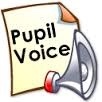**This week our learning theme is … 'Christmas”
|
Welcome to Voles Class (EYFS Unit) |
| Teacher: | Mrs Hardwick | |
|
| Early Years Practitioner: |
|
||
Week beginning 15.12.25
The theme this week is - ‘Christmas’
These are some the things that we will be learning about and exploring.
| Monday |
The children had lots of suggestions about things that they would like to create and decorate, Ellie suggested decorating Christmas pictures, Kai wanted to decorate a Christmas tree, Marsaili thought that she’d like to decorate toys and Maia D suggested creating baubles. So … today the children will be creating bioplastics and learning about how materials ‘work’ as they make decorations (these can then be decorated or made into a picture!). The children will mix given ingredients in a bowl - talking about what they look like and how they change as they are mixed. Then children will need to discuss and agree on the colouring that they would like to add. Adults will then cook the mixture - we will ask the children what they think will happen when it is cooked. We will show them the end result and encourage them to talk about what they notice. Is it the same or different? The children will then leave the dough to cool for a few seconds before rolling it. They can each select a cutter (a toy, a Christmas tree, a bauble) to cut out their ornament, creating a small hole for drying and leaving it to dry. Again - we will talk and share ideas about what they think will happen as they dry. |
| Tuesday |
Today we have Elfridges Christmas Shop - don’t forget to send a named bag into school. Fiadh suggested that we could create Christmas snowflakes. We are going to explore a wax resist technique to do this. We will show the children some examples of snowflakes represented in this way and explore drawing them in the air to practise the movements that they will need to use. Then we will explain that first the children need to draw their design onto white paper using a white wax crayon. We will highlight that it can be hard to see what they are drawing. We will have the lights on fully to help them see what they are drawing! We will remind them to press quite hard with the crayon to make a mark. When it is time to reveal the snowflakes they will need to use a thick paintbrush and spread watercolour paint in their chosen cold colour across the paper. When they have finished, on a separate piece of paper the children will be asked to write their name in a cold colour to create a border for their fabulous snowflakes when on display. They will need to use the pinch and flick technique and look closely at each letter on their name card before writing it. |
| Wednesday |
The children suggested that we could make sandwiches in readiness for our party. Lily said that we would need butter. Jamie suggested jam as a filling. Other children suggested ham and cheese. We will begin by watching a video about how to make sandwiches. Then we will talk about hygiene, and will ask the children to remind each other about what they need to do before they are ready to prepare food (wash hands, take off jumpers). We will also remind them about not licking fingers etc whilst they are cooking. We will explain that they are going to use knives to spread the butter and fillings before cutting their sandwich into smaller pieces. We will ask them to act as ‘Danger Detectives’ and to agree how the knives can be used safely. We will explain that we are making sandwiches to eat tomorrow. We will remind the children to spread butter across the bread - making sure it goes right into the corners. Then spread or add their chosen topping. Next they will need to cut their sandwich into pieces before placing it into a labelled bag to be stored ready for tomorrow. |
| Thursday |
A surprise visitor - ssshh - don’t tell the children! Today is Party Day and the children can wear their special clothes to school all morning. We hope you were all able to see the party food list that we put outside the classroom last week. Children can bring in a favourite CD or a link so that we can find music on the internet - we will ask the children why they like their chosen music before we all dance and sing along. During the party the children will be set some maths challenges, for example, hunting for groups of mince pies or completing Father Christmas exercises - 4 star jumps, three strides, five belly ‘ho-ho-hos’! |
|
Friday |
Today we will be tidying and sorting the outdoor area with the children so that it is ready for next term - the children need to wear older clothes and welly boots if they have them. We will also revisit the Christmas Story and the children will have the opportunity to share their understanding of the story and features of Christmas celebrations. Additionally the children will have the opportunity to sing favourite songs and join in songs and dances from this term. |
Shared reading; Monday 15th
Word aware words: jolly merry
The poem this week is; Santa is here
The counting song this week is: five little reindeer
Show and tell: a Christmas decoration
Class letter: click here
Home Learning links
- The Hungry Little Minds campaign. It features tips and practical activities that parents can do at home with children to support their early learning. There are many simple ways to help children learn and it does not have to be formal. Having everyday conversations, make-believe play and reading together all make a big difference to children’s development.
- The BBC’s Tiny Happy People and the National Literacy Trust’s Family Zone
- Online Safety for under 5s
What the children say...
We ask the children about what they’d like to explore, play with and learn about over each week. All ideas are interwoven through planning.
The children also have the opportunity to discuss what they would like for role play - currently we have a Bakery.

Other areas of learning in Nursery include....
Physical
PE day is on a Thursday for this half term. The children will be taking part in workshops led by Game On.
The children do need their PE kits in school.
Computing
Throughout the year we will be planning open-ended activities in a technology rich environment to enable the children to have opportunities to explore, tinker and develop their ideas through active learning. We will provide a range of simple technology resources, these will be available for children to explore through their play and during adult led activities. The resources will include real, play and safe/defunct devices to support children’s understanding of technology in the world. We will promote safe and careful use of resources and understanding of who to tell if any use of technology makes them feel uncomfortable.
Other experiences will include
- exploring programmes and games which require drag and drop skills
- looking at different uses of technology in
school and at home - using chromebooks, iPads and Mini
mash (on Purple Mash).
RE
RE will be explored partly through short periods of Adult Directed Activities which highlight key festivals, figures, celebrations, religious symbols and religious vocabulary with reference to children’s own experiences and also through the children's own Child Initiated Play.
This half term we will focus on 'What is Christmas to me and others?. We will explore the story of the first Christmas in depth.
Swing Gate Lane, Berkhamsted, Hertfordshire HP4 2LJ
01442 863913
admin@swinggate.herts.sch.uk




